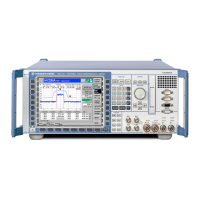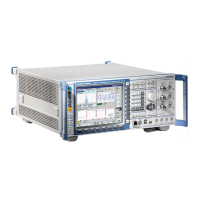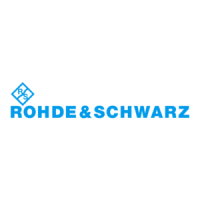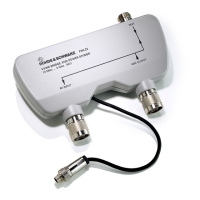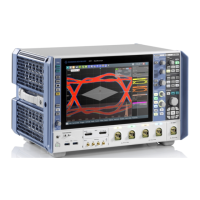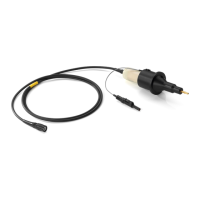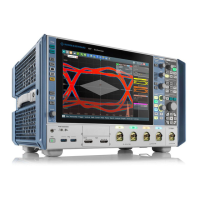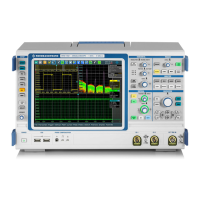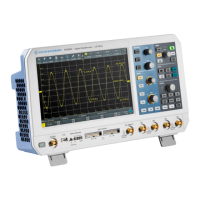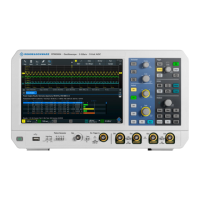CMU Popup Menu Setup
1100.4903.12 4.11 E-10
SCPI
Connect
The SCPI Connection section determines the remote-control interface of the CMU.
The following interfaces are available:
GPIB IEEE-bus interface according to IEEE 488
COM 1 Serial (RS-232-C) interface COM 1
COM 2 Serial (RS-232-C) interface COM 2
For the characteristics of the interfaces see Chapter 1 and Chapter 8, "Hardware
Interfaces ".
Primary
Address [GPIB]
The Primary Address section sets the IEC-bus address of the CMU. The default
setting is 20; addresses 0 to 30 can be assigned.
The IEEE-bus address is addressed in the remote-control commands in the form of
the associated primary address, see Chapter 5, Switchover to Remote Control, and
Chapter 7, Program Examples.
Remote control
SYSTem:COMMunicate:GPIB[:SELF]:ADDRess 0 to 30
SYSTem:REMote:ADDRess:PRIMary 0 to 30
Second.
Address [GPIB]
The Second. Address section assigns secondary addresses to up to 29 function
group and test mode combinations (secondary address 0 is always mapped to the
base system; no re-mapping is possible). The available function groups (e.g. RF
Non Signalling, GSM 900 Signalling etc.) can be displayed and selected with the
roll-key after an Address n field is activated.
The network and the test (signalling) mode are addressed in the remote-control
commands in the form of the associated secondary address, see Chapter 5,
Setting the Device Addresses, and Chapter 7, Program Examples.
Remote control
SYSTem:REMote:ADDRess:SECondary 1 to 29,<FgrpName> | NONE
Local ➠ Remote
Transition
Defines the behavior of the CMU in a local to remote transition. The command is
valid for all function groups and test modes, however, its effect depends on the test
mode (Signalling or Non Signalling tests, see e.g. GSMxxx-MS manual):
Disconnection on
(box checked) In Signalling mode, the connection or call is dropped and the
CMU returns to its default signalling state (e.g. SOFF in the
GSMxxx-MS function groups). In Non Signalling mode, all
generators are switched off.
Disconnection off In Signalling mode, all signalling states are maintained. This
makes it possible to switch the instrument to remote control
without dropping a call or connection. In Non Signalling mode,
the current operating state of all generators is maintained.
Remote control
SYSTem:GTRMode:COMPatible ON | OFF
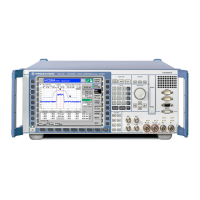
